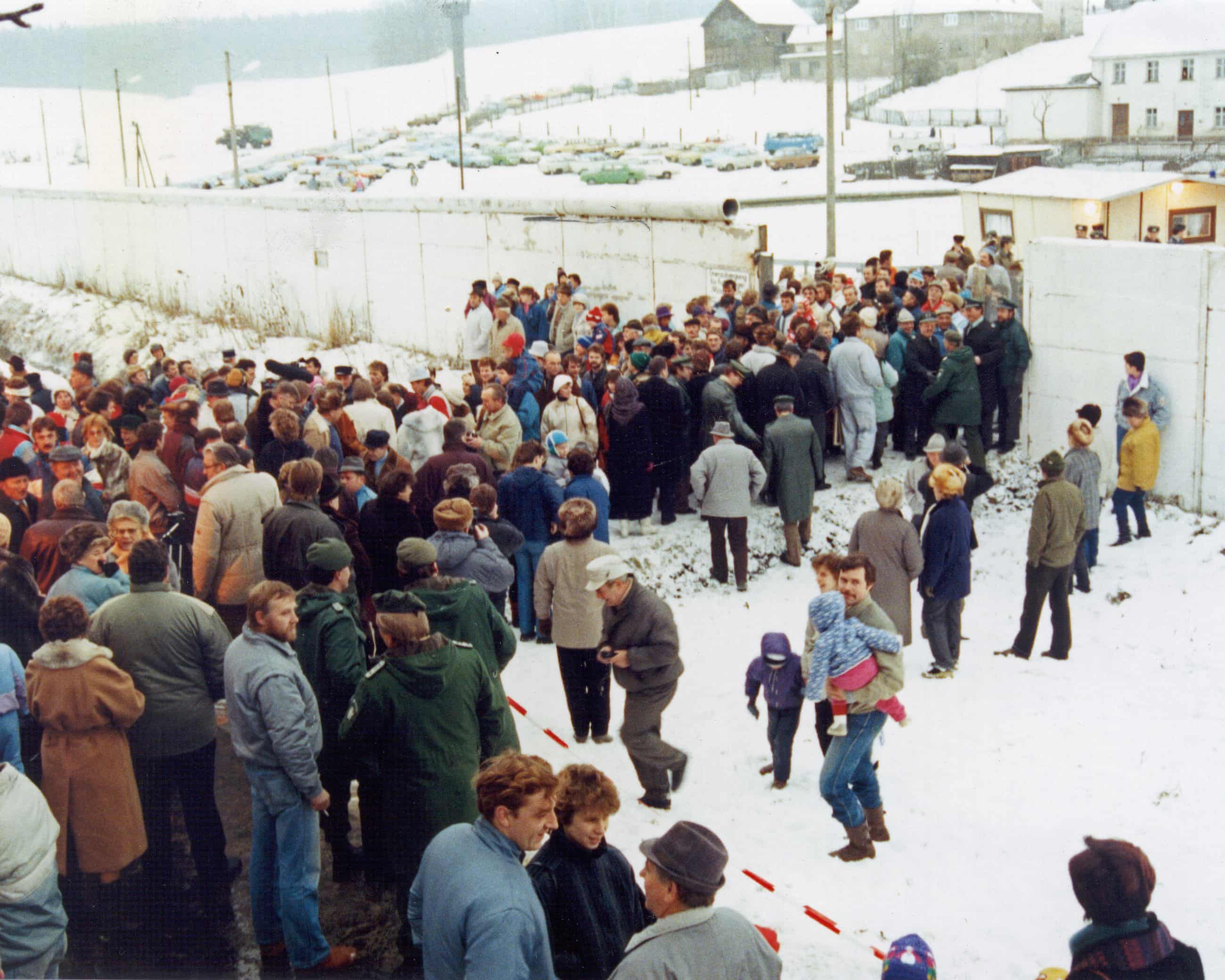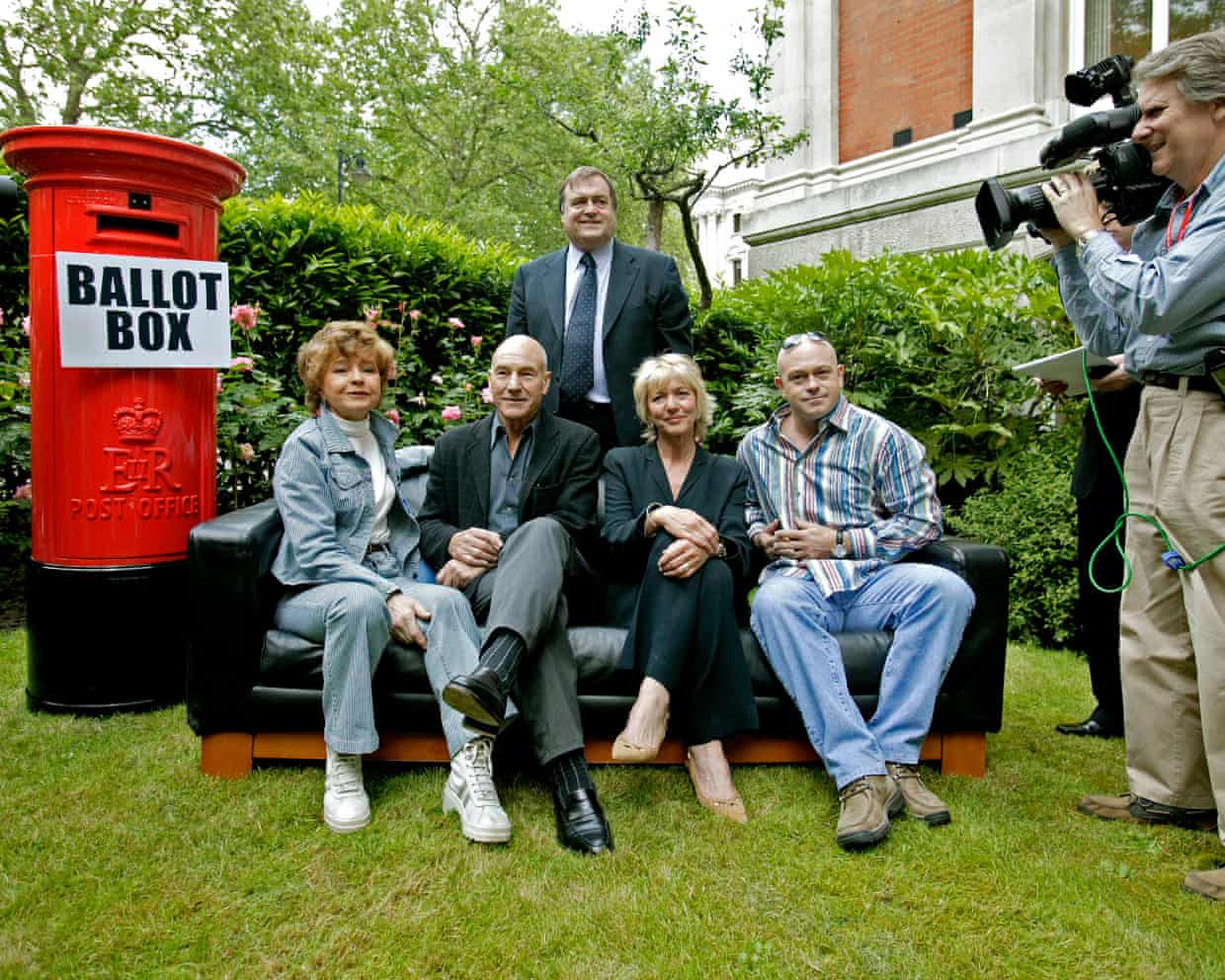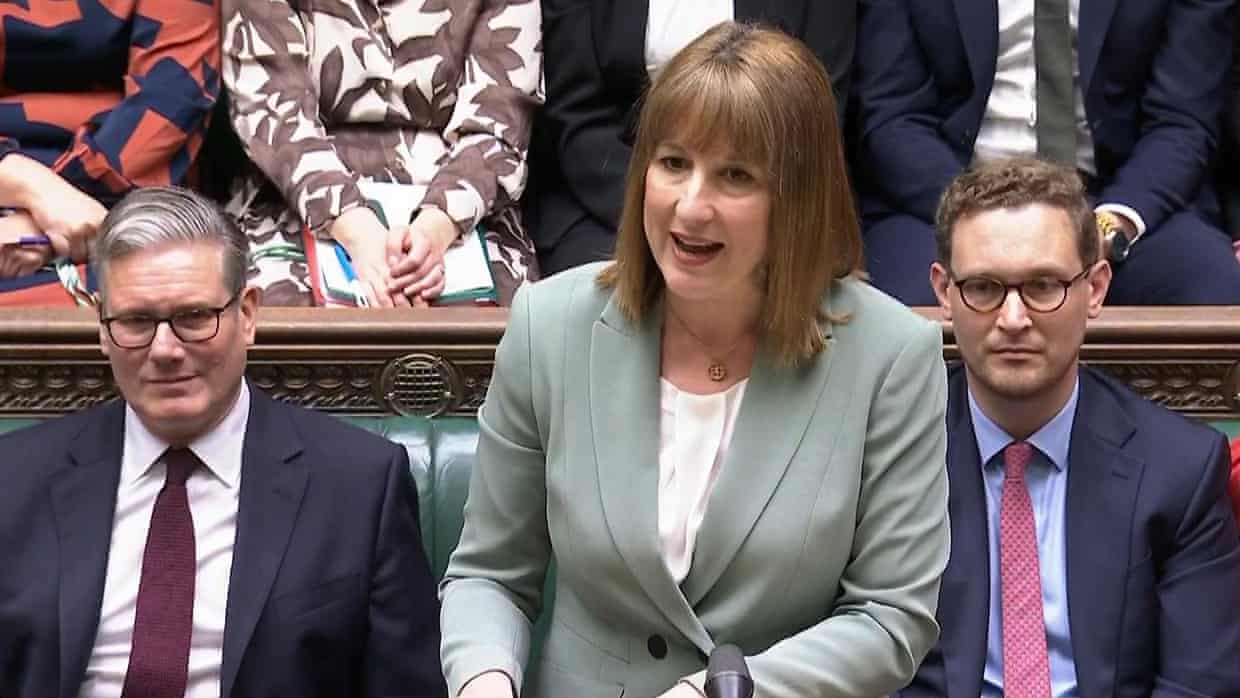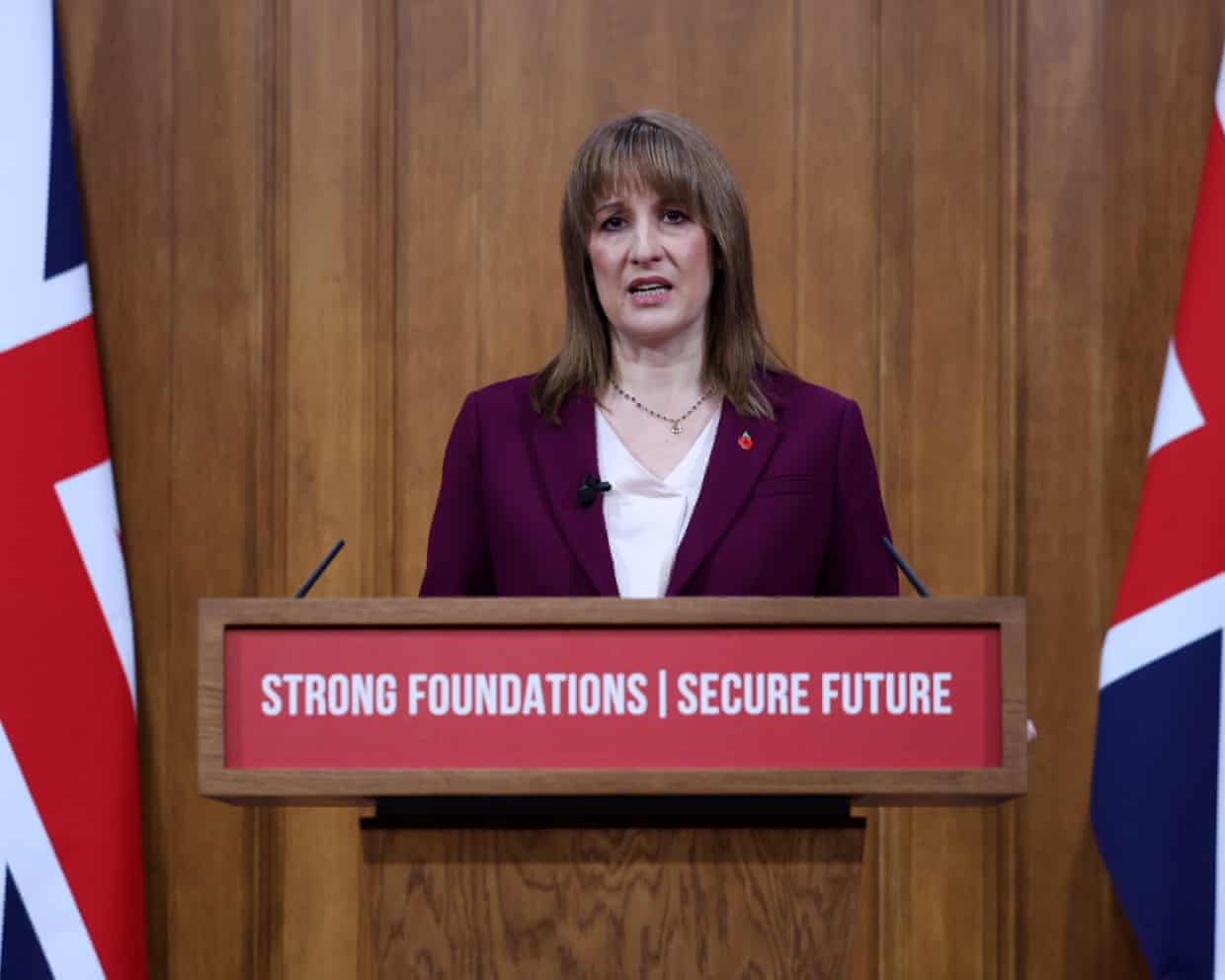Big trouble in ‘Little Berlin’: the tiny hamlet split in two by the cold war

A new museum in Mödlareuth tells the story of how a settlement of only 50 people straddled Bavaria in West Germany and Thuringia in the eastA creek so shallow you barely got your ankles wet divided a community for more than four decades.By an accident of topography, the 50 inhabitants of Mödlareuth, a hamlet surrounded by pine forests, meadows and spectacular vistas, found themselves at the heart of the cold war.They had the misfortune to straddle Bavaria, in West Germany, and Thuringia in the East, a border that was demarcated first by a fence and then by a wall.American soldiers called it Little Berlin.Months after their own wall was breached, and even before their country had reunified in 1990, a group of local people set about memorialising their history.
The work is about to come to fruition: on 9 November, the 36th anniversary of the fall of the (big) Berlin Wall, the German-German Museum Mödlareuth will open.It was officially inaugurated by the federal president, Frank-Walter Steinmeier, in early October, but the exhibition wasn’t quite ready.Addressing the villagers who lived through the old days, Steinmeier said: “You were witnesses of an inhuman division, which ripped families apart and turned neighbours into aliens.”Even at its founding in 1810, the village cut across the Kingdom of Bavaria and the Principality of Reuss, a princely house best known for giving all its male members the name Heinrich and numbering them sequentially by birth.As Steinmeier told the audience, the quirk never stood in the way of the inhabitants drinking in the same pub, attending the same church and sending their children to the same school.
Then came the second world war.As soon as they arrived, the Russians erected wooden posts by the stream.For a year they took over the entire village, establishing their command in a house on the Bavarian side, adorning it with a picture of Stalin and a red star.The Americans convinced them to withdraw back over the brook.For a while, villagers could still hop over, though as restrictions tightened they were required to show ID, even though everyone knew who they were, and to return at night.
Then, in 1952, came barbed wire and the formal closing of the border.In 1966, as in Berlin five years earlier, a wall was built, with mines, tank traps and guard posts.The villagers could still see each other by climbing hills, but on the eastern side waving and shouting were prohibited.One woman was put on a Stasi watch list for responding “same to you” to a (Bavarian) villager who wished her “happy new year”.I was told stories such as these by Robert Lebegern, the museum’s director, who has spent much of his working life creating it.
Villagers were consulted early on about how much wall they wanted to preserve.They chose a stretch on the western fringe, close to where one of their own managed to escape in the dead of night with a ladder, after which the border was heavily reinforced.Two watchtowers are preserved alongside a series of tableaux depicting the most dramatic dates in the village’s history.As we walk, Lebergen lists the regulations: nobody could come within 5km of the border.Farmers needed special permission to tend to their crops; the husband or wife could work the combine harvester but never both, in case they tried to make a run for it.
Armed guards stood watch.The border between West Germany and the GDR stretched 1,400km, from the Baltic Sea in the north to here in the south.Berlin is remembered and memorialised the most, but more than twice as many people (well over 300) died trying to cross it in rural areas than in the big city.Lebegern reminds me that 95% of escape attempts failed.Most of Mödlareuth’s villagers were farmers or craftsmen, who adjusted to living in the grey zone between two ideological spheres by keeping their heads down and looking after their fields.
They neither supported the communist regime nor resisted it, Lebegern explains.For visitors, however, the hamlet became a kind of pilgrimage.About 15,000 came to visit every year, binoculars in hand, to gawp – and then quickly leave.In 1983, the US vice-president, George Bush, was shown around by the German defence minister.Twenty five years after reunification, Tannbach, a TV series about a fictional village resembling Mödlareuth, led to renewed interest.
The opening of the new museum – with a cafe, shop, cinema room and large car park – is likely to provide a further boost.Will it change the village? It is, in any case, changing all the time.Some of the original inhabitants on both sides have died; others have left.Newcomers have moved in, including a man from Leicestershire called Darren.His German wife, Kathrin, is a traffic cop for the Bavarian police.
They live up a hill, past a chicken coop, on the Thuringia side.The village is still divided, administratively at least, with different car number plates and postcodes.When Steinmeier visited, he was accompanied by the state premiers of both Bavaria and Thuringia.And when his foot crossed the brook, he was formally handed over by one police force to the other.History has moved on; the border has not.
This article was amended on 3 November 2025,George Bush was vice-president, not president, when he visited in 1983,

Letter: Prunella Scales obituary
Prunella Scales was not only a brilliant comic and dramatic actor, she was a great, deeply political citizen.As an active, and often leading, member of her trade union, Equity, she demonstrated solid commitment to, and earned respect from, her fellow professionals. And, like her beloved husband, Tim West, she was a dedicated member of the Labour party.She also supported CND, the Anti-Apartheid Movement, the Anti-Nazi League and the women of mining communities, as well as undertaking extensive charity work. She would say: “Sometimes, dear, it’s useful to stand up and show that you are taking action and not acting

Lancashire’s Reform-run council plans to close care homes and day centres
Lancashire’s Reform-run council has been accused of “selling off the family silver” with plans to save £4m a year by closing five council-run care homes and five day centres and moving residents into the private sector.One of the care home residents, a 92-year-old woman, said she would leave only by “being forcibly removed or in a box”.The Reform-voting son of another resident said any move would “kill” his mother, and vowed to quit the party if the closures went ahead.Questions are also being asked about a potential conflict of interest involving Reform’s cabinet member for social care in Lancashire, who owns a private care company with his wife.Reform UK took control of Lancashire county council (LCC) from the Conservatives in May, winning 53 of the 84 available seats

Reeves refuses to say she will stick to manifesto pledge on tax rises and insists she must face world ‘as it is’ – as it happened
It is probably now all but certain that Rachel Reeves will break Labour’s manifesto promises and put up income tax in the budget. That is where the commentariat consensus is, five hours after the chancellor’s speech this morning.That is not something we can report yet as fact. But the hints in the speech this morning went beyond “the clearest sign yet (that income tax will rise)”, to use one of the essential cliches of political journalism.There is a category of information where something isn’t quite a fact, but it is so widely assumed to be right that it might just as well be

Reeves wants to talk about the budget, but she’s taken a vow of white noise | John Crace
It’s this season’s fashion accessory for every politician. Outside election campaigns, press conferences usually signal major set piece events or a national emergency. Now you can’t move for them. Reform have had four inside a week with another one lined up for tomorrow. Even Kemi Badenoch has been at it with a bizarre outdoors show-and-tell last Thursday

French taxi driver cleared of stealing from David Lammy after fare dispute
A French taxi driver accused of stealing money and luggage from David Lammy has been acquitted due to lack of evidence, a prosecutor said.Nassim Mimun, 40, drove the deputy prime minister and his wife, Nicola Green, more than 600km (370 miles) from Forli, near Bologna in northern Italy, to the ski resort of Flaine in the French Alps on 11 April.But at the end of the journey the “tone escalated” over the cost of the fare, the Bonneville prosecutor Boris Duffau said in May.The driver, from the south-eastern city of Avignon, then left with his passengers’ bags in the boot of his car. “He dropped them off the next day at a municipal police station” but that was considered theft due to the length of time he had them in his possession, Duffau said

Starmer was briefed on Mandelson’s Epstein links before appointing him, say civil servants
Keir Starmer was briefed on details of Peter Mandelson’s relationship with Jeffrey Epstein before he decided to make him US ambassador, senior civil servants have said.The prime minister received a Cabinet Office report that contained “a summary of reputational risks” associated with appointing Lord Mandelson, including his “prior relationship with Jeffrey Epstein” and past resignations as a Labour minister.Chris Wormald, the cabinet secretary, told MPs that the report contained “direct extracts from media reporting and notes a general reputational risk” arising from making the appointment.Speaking at the foreign affairs select committee, he said the “judgment about whether to make the appointment or not” had ultimately been one for Starmer.Mandelson’s longstanding friendship with Epstein, which continued after the disgraced financier was convicted of soliciting prostitution from a minor, was a matter of public record before his appointment was made

Three decades later, The Truman Show feels freshly disturbing – and astoundingly prescient

Big trouble in ‘Little Berlin’: the tiny hamlet split in two by the cold war

Josh O’Connor: the shape-shifting star who became cinema’s most wanted

From Bugonia to All’s Fair: your complete entertainment guide to the week ahead

The Guide #215: Why we can’t get enough of Bohemian Rhapsody

Stephen Colbert on ex-prince Andrew: ‘Pervert formerly known as prince’